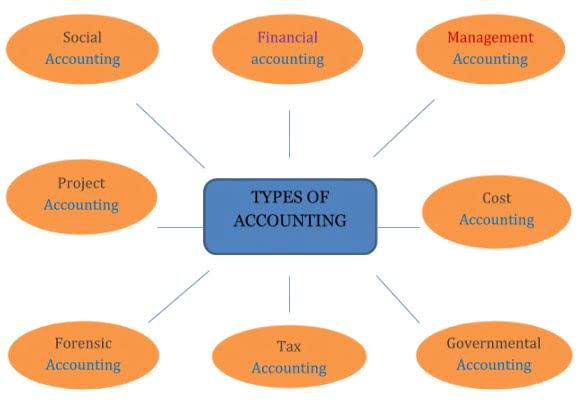Financial Forecasting using Percent of Sales Method & How to Calculate Projected Retained Earnings

The group can now calculate X to forecast how much money will be available in the following month. Management would want to know why baking brownies has become more expensive if the percentage was 25% last year. It might be due to rising flour and egg costs, but it might also be due to a shift in the supply chain. Perhaps the new industrial kitchen is farther away from the delivery trucks. Some learners may also qualify for scholarships or financial aid, which will be credited against the program fee once eligibility is determined. HBS Online’s CORe and CLIMB programs require the completion of a brief application.

B. Use Multiple Forecasting Methods for Accuracy
Still, despite its shortcomings, I think the percent of sales method is a useful method worth understanding and being able to apply. Liz’s final step is to use the percentages she calculated in step 3 to look at the balance forecasts under an assumption of $66,000 in sales. Next, Liz needs to calculate the percentage of each account in reference to her revenue by dividing by the total sales.
Demand Forecasting vs. Sales Forecasting: Key Differences & When to Use Each

These are carried forward from the most recent financial statements or adjusted based on separate strategic decisions, such as planned capital expenditures or new debt issuance. The final step involves ensuring the projected balance sheet balances, often by introducing a “plug” figure, which represents the external financing needed or any excess cash available. To project the income statement, the calculated percentages from historical relationships are applied to the sales forecast. For example, if Cost of Goods Sold was historically 50% of sales, and future sales are projected at $120,000, then projected COGS would be $60,000.

How to Choose a Pricing Model: Strategies and Techniques
For the sake of example, let’s imagine a hypothetical businessperson, Barbara Bunsen. She operates a specialty cake, army bed, and cinnamon roll shop called “Bunsen’s Bundt, Bunk Bed, Bun Bunker” or “B6” for short. We’ll use her business as a reference point for applying the percent of sales method.

Ways Generative AI Will Help Marketers Connect With Customers
When preparing a financial prediction using this method, businesses must prepare a plan and select the accounts the final projection must include. Some accounts that businesses may want to forecast include the accounts payable, inventory, accounts receivable, and COGS or cost of goods sold. The Percentage Of Sales Method serves primarily as a tool for financial forecasting and planning, virtually for every scale of organization. It leverages a company’s sales as the key variable to predict its future financial condition, including budgeting for anticipated expenses, capital investments, revenues, and asset requirements. These case studies demonstrate the versatility and effectiveness of the Percentage of Sales Method across various industries.
Improve the percentage-of-sales forecasting with accounts receivable to sales ratio
As AI technology continues to evolve, its influence on sales forecasting will only grow, providing businesses with the insights needed to thrive in an ever-changing market landscape. From the perspective of a financial analyst, AI-driven sales forecasting is a game-changer. It enables the creation of more robust financial models that can account for a wider range of variables and potential scenarios. For instance, an AI system unearned revenue might predict a spike in sales following a positive product review on a major platform, allowing the company to adjust production and inventory accordingly. Most business owners will want to forecast things like cash, accounts receivable, accounts payable and net income.
Business Insights
You need to be aware of the financial line item you wish to analyze and your company’s sales data in order to make a financial prediction using the percentage of sales method. Pro forma statements are incredibly valuable when forecasting revenue, expenses, and sales. These findings are often further supported by one of seven financial forecasting methods that determine future income and growth rates. Today, sales forecasting is an integral part of strategic planning in businesses. It leverages big data, artificial intelligence, and machine learning to not only predict sales but also to understand customer behavior, optimize inventory levels, and inform marketing strategies. The evolution gym bookkeeping of sales forecasting reflects the broader trajectory of business intelligence, where data-driven decision-making is paramount.
Calculate forecasted sales.
- For the percentage-of-sales method to yield accurate forecasts, it is best to apply it only to selected expenses and balance sheet items that have a proven record of closely correlating with sales.
- This forecasting method uses estimated overarching sales growth to determine changes to any financial line items that directly correlate to sales.
- Establishing historical relationships is a key step in the percent of sales method, providing the foundation for future projections.
- These case studies demonstrate the versatility and effectiveness of the Percentage of Sales Method across various industries.
- This includes things like accounts payable, accounts receivable, cash, cost of goods sold (COGS), fixed assets, and net income.
By understanding these relationships, businesses can estimate future financial performance based on anticipated sales growth. This method helps anticipate resource needs and financial outcomes without complex models. The percentage of sales method is a financial forecasting technique that estimates future financial statement items based on historical relationships with sales. This method is widely used due to its simplicity and effectiveness in predicting expenses, assets, and liabilities in proportion to expected sales growth. By applying this method, businesses can efficiently plan for financial needs, manage cash flow, and make informed strategic decisions. This article explores the percentage of sales method, its application, benefits, limitations, and best practices.
- Especially when it comes to creating a budgeted set of financial statements.
- For example, a retail clothing store might find that its COGS is 50% of sales, marketing expenses are 10%, and rent is fixed at $10,000 per month.
- The percentage of sales method refers to a financial forecasting model that enables a business to predict financial alterations based on spending accounts and past and current sales.
- Our easy online enrollment form is free, and no special documentation is required.
- This method is seen as more reliable because it breaks down the probability of BDE by the length of time past-due.
Projected sales and expense figures provide a basis for departmental budgets, aiding in resource allocation and performance monitoring. The projections can also inform decisions related to inventory management, accounts receivable policies, and capital expenditures, aligning with anticipated business activity. The completed financial projections, generated through the percent of sales method, provide insights for various business functions. These projections serve as a foundational tool for strategic and operational planning. They help visualize the financial landscape a company might face under different sales growth scenarios. The underlying assumption is that the percent of sales method of financial forecasting these historical relationships will remain consistent in the future.

Laisser un commentaire
Rejoindre la discussion?N’hésitez pas à contribuer !